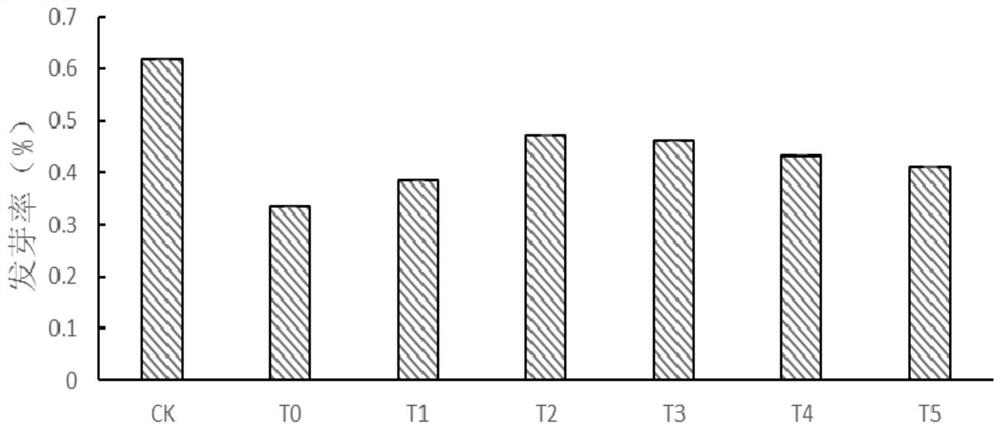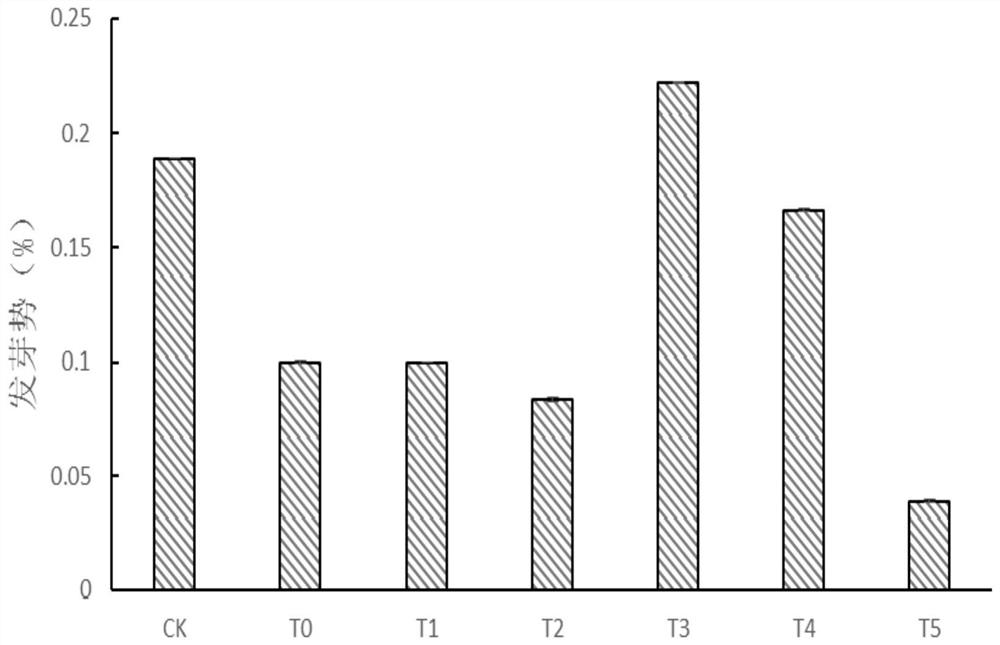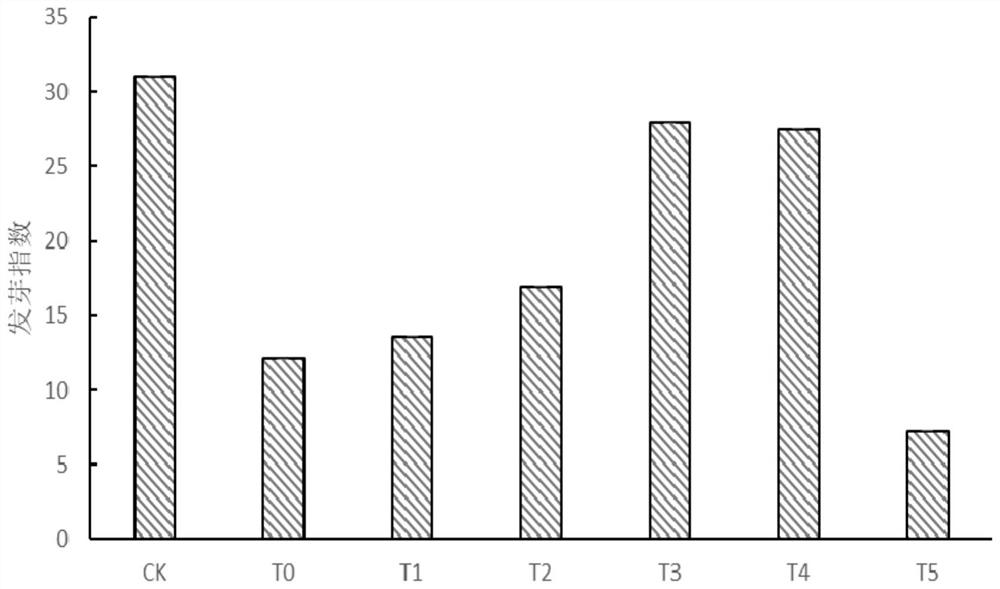A method for improving tartary buckwheat seedling resistance to heavy metal lead stress
A technology of anti-heavy metals and seedlings, applied in the direction of seed and rhizome treatment, application, grain cultivation, etc., to achieve the effect of increasing germination rate, promoting transformation and reuse, and increasing the activity of POD and CAT
- Summary
- Abstract
- Description
- Claims
- Application Information
AI Technical Summary
Problems solved by technology
Method used
Image
Examples
Embodiment 1
[0033] A method for improving tartary buckwheat seedling resistance to heavy metal lead stress, comprising the following steps:
[0034] (1) Choose tartary buckwheat seeds with no scars on the outside and full grains, dry them in the sun for 2 days, every day for 5-6 hours, then use a concentration of 0.1wt% potassium permanganate solution to disinfect them for 2 hours, and rinse them with distilled water for 3 times;
[0035] (2) Submerge the washed seeds in step (1) in the seed soaking solution, and soak the seeds at a constant temperature of 25°C for 10 hours; wherein, the seed soaking solution includes ionic titanium, sodium hydrosulfide, γ-aminobutyric acid and molybdenum Ammonium acid, the concentration of ionic titanium is 0.02mmol / L, the concentration of sodium hydrosulfide is 3mmol / L, the concentration of γ-aminobutyric acid is 0.3mmol / L, and the concentration of ammonium molybdate is 0.5mmol / L;
[0036] (3) Wipe and sterilize the seed germination box with alcohol, th...
Embodiment 2
[0039] A method for improving tartary buckwheat seedling resistance to heavy metal lead stress, comprising the following steps:
[0040] (1) Choose tartary buckwheat seeds with no scars on the outside and full grains, dry them in the sun for 3 days, every day for 5-6 hours, then use a concentration of 0.1wt% formaldehyde solution to disinfect them for 2 hours, then rinse them with distilled water for 4 times;
[0041] (2) Submerge the washed seeds in step (1) in the seed soaking solution, and soak the seeds at a constant temperature of 25°C for 12 hours; wherein, the seed soaking solution includes ionic titanium, sodium hydrosulfide, γ-aminobutyric acid and molybdenum Ammonium acid, the concentration of ionic titanium is 0.05mmol / L, the concentration of sodium hydrosulfide is 12mmol / L, the concentration of γ-aminobutyric acid is 0.6mmol / L, and the concentration of ammonium molybdate is 0.7mmol / L;
[0042](3) Wipe and sterilize the seed germination box with alcohol, then put it...
Embodiment 3
[0045] A method for improving tartary buckwheat seedling resistance to heavy metal lead stress, comprising the following steps:
[0046] (1) Choose tartary buckwheat seeds with no scars on the outside and full grains, dry them in the sun for 3 days, every 6 hours, then disinfect them with 0.1 wt% hydrogen peroxide solution for 2 hours, and rinse them with distilled water for 5 times;
[0047] (2) Submerge the washed seeds in step (1) in the soaking solution, and soak the seeds at a constant temperature of 25°C for 24 hours; wherein, the soaking solution includes ionic titanium, sodium hydrosulfide, γ-aminobutyric acid and molybdenum Ammonium acid, the concentration of ionic titanium is 0.08mmol / L, the concentration of sodium hydrosulfide is 24mmol / L, the concentration of γ-aminobutyric acid is 0.9mmol / L, and the concentration of ammonium molybdate is 0.8mmol / L;
[0048] (3) Wipe and sterilize the seed germination box with alcohol, then put it into double-layer filter paper, an...
PUM
 Login to View More
Login to View More Abstract
Description
Claims
Application Information
 Login to View More
Login to View More - R&D
- Intellectual Property
- Life Sciences
- Materials
- Tech Scout
- Unparalleled Data Quality
- Higher Quality Content
- 60% Fewer Hallucinations
Browse by: Latest US Patents, China's latest patents, Technical Efficacy Thesaurus, Application Domain, Technology Topic, Popular Technical Reports.
© 2025 PatSnap. All rights reserved.Legal|Privacy policy|Modern Slavery Act Transparency Statement|Sitemap|About US| Contact US: help@patsnap.com



